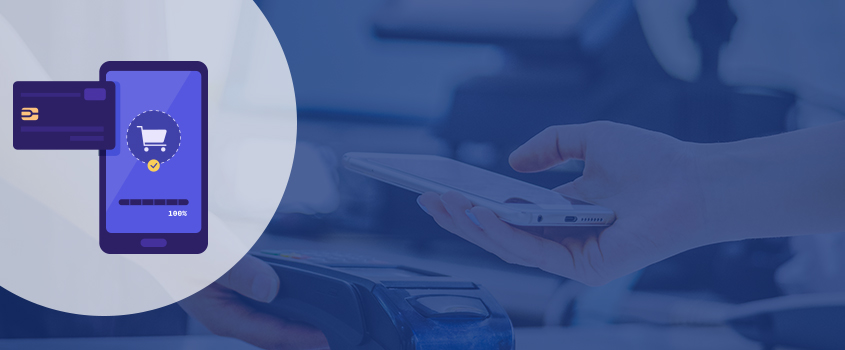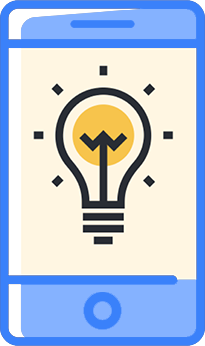Introduction:
Technology is gradually entering various industries and finance is an untapped market. Financial sector can introduce benefit from technological advancements. Startups app development focuses on providing best services to their clients so that they can create a brand name for the business.
What is Fintech?
Fintech is a combination of the terms “finance” and “technology” and refers to a business that uses technology to enhance or automate financial services and processes. The term is used to describe a broad and rapidly growing industry serving both consumers and businesses. Fintech offers a wide range of applications from mobile banking and insurance to cryptocurrency and investment applications.
There is no denying that each of the three businesses are as of now on the ascent. However, envision the effect they can have when they merge. The comfort of IoT gadgets combined with the intensity of information filled AI calculations has earth shattering potential. However, just how each innovation has its advantages, every one of them presents various challenges as well. New companies ought to be prepared to confront. The current fintech appropriation is evaluated to be at 33% around the world (up to 69% in certain districts).
The Fintech business is spread out. As indicated by CB Insights, there are “41 VC aided fintech giants worth a joined $154.1B.” A major driving element is that numerous traditional banks are supporters and adopters of the technology, actively investing in, acquiring or partnering with fintech start-ups since it is simpler to give carefully disapproved of clients what they need, while additionally pushing the business ahead and remaining pertinent.
How does fintech work?
Fintech is certainly not a new industry, it’s only one that has developed rapidly. Innovation has consistently been a part of the money related world, whether it’s the launch of credit cards during the 1950s or ATMs, electronic trading floors, personal finance applications and high-frequency trading in the decades that pursued.
The budget behind money related innovations differ from project to project, application to application. Probably the most up to date advances are using AI calculations, block-chain and information science to do everything from process credit dangers to run hedge funds. Indeed, there’s a whole subset of regulatory technology named “regtech” intended to explore the intricate world of compliance and administrative issues of enterprises like fintech.
The internet of finance: How fintech organizations can profit by IoT
The advantage of fintech and IoT integration is the additional information channel it opens. By using smart connected gadgets, fintech organizations are more likely to comprehend client requirements and design their product offerings likewise. Additionally, incorporating fintech and IoT (i.e., individual wearable gadgets) will possibly make installments simpler and more secure.
The following will outlinethe most significant benefits obtained from the use of fintech IoT:
1.Wireless Payments

Wearables can possibly change money withdrawal and wireless transactions by supplanting traditional cards or cell phones with smart devices. Other than the prevalent smartwatches, there are a few new companies taking a shot at smart devices. To be specific, Kerv positions itself as “the world’s first contactless payment ring.”
2. Security and verification
Another important use for wearable IoT in fintech is security. For instance, Nymi is a smart wristband that uses the individual’s pulse (electrocardiogram) as the biometric verification key. The innovation was similarly tried for secure wireless payments in 2015.
3. Risk assessment for insurance
Different IoT sensors can be an important piece of information for the protection and risk management segments. For instance, vehicle guarantors will have the option to offer customized protection bundles, in view of the customer’s driving conduct, normal speed, time and separation voyaged, and so on.
Things to consider when building a fintech app with AI or IoT integration
1.Know your market

While dealing with a highly competitive industry like fintech, current market state and customer demand needs to be understood. What are the existing solutions? Which problems do they solve? Are they popular? These are some of the primary questions that need to be answered. Market study is extremely important before entering the market so you are prepared to face any challenges. You need to know your competitors so that you can offer something unique.
2. Become more acquainted with your target audience
Host gatherings to converse with your potential clients face to face. In this way you will be able to recognize the necessities of the crowd and convey it to them that you can fulfil their demands with your product and how precisely you can do that. You can likewise gain from the achievement and disappointments of your immediate and backhanded contenders.
3. Focus on security
The applications that manage client information, particularly a monetary one, must provide a significant level of assurance. It is important for clients to trust the company and the information should be protected at all times.
Considering the measures of data that IoT gadgets gather and the information that is expected to construct and prepare AI calculations, security ought to be your main concern. There are some significant security dangers when utilizing car IoT gadgets or smart home gadgets.
4. Client first should be the motto
Most budgetary items, particularly the ones that incorporate IoT mixes and complex AI-based highlights are typically difficult to set up and use. It is extremely time consuming for the clients to see how it functions, which may lead to lack of interest and thereby low client consistency standard.
From your website to the application itself, keep it simple for the users to get a handle on the features of your product. Design a comprehensive on boarding UX to allow users to get started with the application. Your application ought to be very basic and easy to comprehend, utilize and explore. Incorporate a detailed FAQ page or an every minute of every day in-application support line.
5. Provide an engaging experience
Personalization is another key component of an effective financial application. Access to large number of customer-specific and real-time behavior data allows you to build the experience accordingly.
For instance, you can push customized offers to your clients relying upon their online activities. This can be a one-time rebate for a store purchase with whom you’ve partnered with, rewards for other activities on the application (e.g., welcoming a companion or rating the application), cashback on consistently buying.
6. Avoid unimportant features
Designing a compact financial application can be a test, particularly when you are building a personal finance application. However, it is basic to initially downplay the less significant highlights, at any rate.
Building a MVP to test out your suspicions and improve/change/grow/rotate it later on is a savvy system that can set aside your time and cash.
Conclusion
The most critical element of a successful fintech app is having a strong team on your side. It is not easy to create a fintech app and it is important to find a technology provider who has extensive experience in IoT and AI.
Integrating Fintech and IOT can lead to saving time and leads to hassle free online payments. In order to create a powerful Fintech App the technical team should also be well equipped and aware of market trends and consumer requirements.

